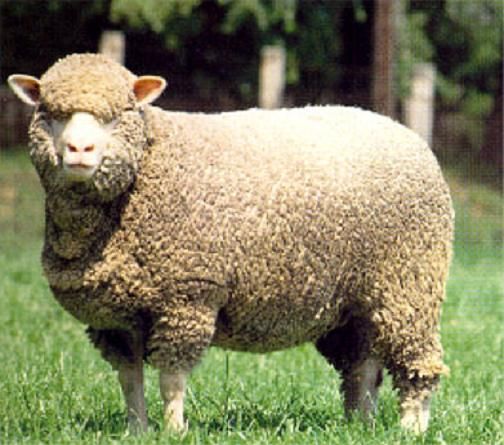
A particular type of sheep--a Merino sheep--produces Merino wool.
AUSTRALIAN WOOLGROWERS HELP DRESS PRINCE WILLIAM
Australia is the largest exporter of wool in the world. Recently 211 Australian woolgrowers donated wool as part of the “Wool Fit for a Prince” project in an effort to create a wedding gift for Prince William and his wife-to-be—a wool suit for each. The gesture to dress Prince William and his fiancé will benefit a unique Australian charity: the Royal Flying Doctor Service. Prince William and Kate Middleton, who will be married on April 29, nominated the Royal Flying Doctor Service of Australia (RFDS) as one of only three non-United Kingdom charities to benefit from a gift fund established for the upcoming Royal Wedding. The fund was established to allow well-wishers around the globe to express congratuations through a charitable donation in lieu of a wedding gift.
THE WOOL TAKES AN AGE-OLD JOURNEY
The cloth was made from fibers provided from woolgrowing properties representing every Australian state and landscape. The wool followed the same “path” it has taken for over 200 years since the first bale of Australian wool was sent to England to clothe King George III. From Sydney, Australia the donated wool was scoured and combed in Biella, Italy, by Pettinatura di Verrone, before being dyed and spun at Bulmer & Lumb in Bradford. It was woven at Taylor & Lodge in Huddersfield, UK into two lengths of luxurious worsted–a grey pinstripe for Prince William and a plain grey flannel for Kate. Both pieces of fabric have the motif “To celebrate the marriage of HRH Prince William and Kate Middleton 29th April 2011” printed on the selvedge. The fabric was then tailored by Anderson & Sheppard in Saville Row, London into two suits. The Flying Doctors will also benefit from the private sale of the surplus Australian Merino wool suit lengths remaining after the Prince’s suit is tailored.
AN ADDED GOAL IS THE AWARENESS OF WOOL
Australian Wool Innovation CEO Stuart McCullough added: “The project to dress Prince William and Kate in the lead-up to their wedding was initiated by woolgrowers as a gesture of thanks to Prince William’s father, HRH The Prince of Wales as his global Campaign continues to raise the awareness of wool as a natural and renewable fiber.” Mr. McCullough added a small sample of the final cloth will be sent to every Australian woolgrower who contributed to the bale as a fitting way to commemorate the occasion of the Royal Wedding.
THE RFDS PROVIDES EMERGENCY CARE
Today, the Royal Flying Doctor Service provides emergency aeromedical and primary health care services to more than 250,000 people across Australia every year, helping someone every two minutes. The RFDS operates a fleet of 54 aircraft and maintainS 21 aviation bases and five remote health facilities with a total staff of 900. They conduct over 100 aeromedical flights every day, 365 days per year.
WOOL IS ECO-FRIENDLY
Wool is a natural fibre which grows on sheep and is a bit like hair. When it is cut, it grows back. Wool clings together and is environmentally friendly. By simply eating grass and drinking water, sheep produce a fiber that no scientist using chemicals can copy. It has a comfortable feel and drapes well. Wool has the ability to absorb moisture and because of this ability, it is relatively free from static. It is also resistant to soiling. Wool is comfortable in a wide range of climatic conditions. It is warm in winter and cool in summer. Unlike synthetic materials, because of its natural fibers, wool breathes, allowing comfort to the wearer. Wool can be dyed easily and molds into desired shapes. It can be compacted into felt and is relatively fire resistant. Wool tends to char rather than burn and when ignited, it burns slowly. It is biodegradable. Unlike plastic, it will break down and go back into the soil. It is renewable. Unlike fossil fuels, such as oil, we can produce more of it. Wool is reliable, it can be used over and over again. It’s been a prized fabric for generations, and will no doubt continue to remain a favored fabric for sewers and tailors around the world. Threads supports the wool industry through coverage of the Make It With Wool competition. (See Threads issue no. 152, January 2011.)


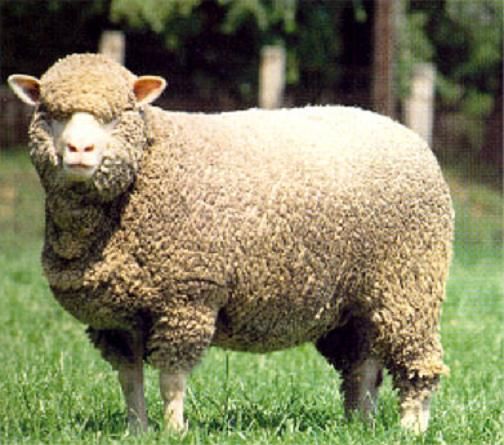
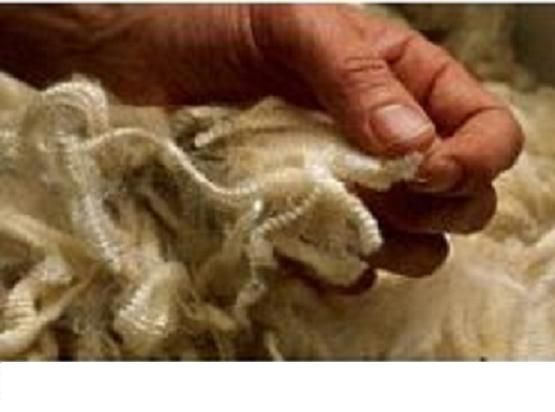

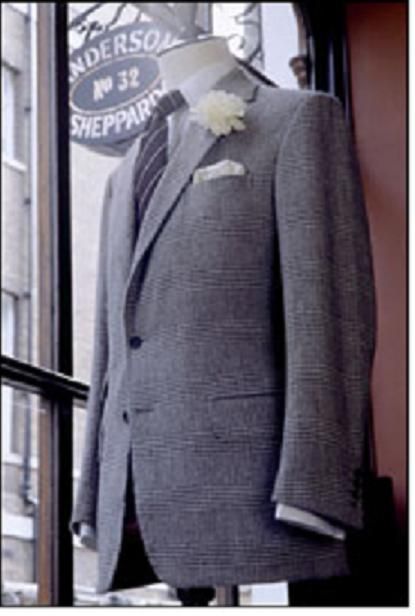

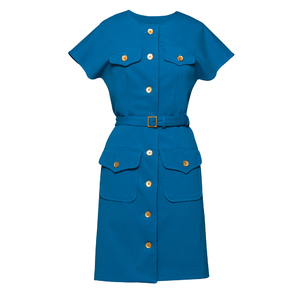
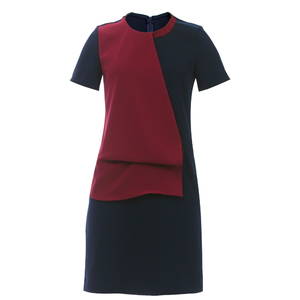

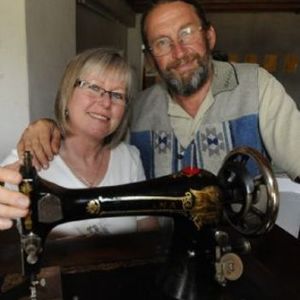

























"A particular type of sheep--a marino sheep--produces marino wool."
Sorry-it's the Grammar Police here-I hope you quickly correct the horrible mistake of misspelling the breed of sheep in the Subject title under the image at the top of this topic!
Merino is the correct spelling
It's been repaired. I take full responsibility for the error. Thanks so much for pointing it out.
amm - You are truly a strong woman!
I have a little note facing me on my bulletin board above my computer - for just this purpose in my own writings:
ADMIT to mistakes.
APOLOGIZE.
ASK what will make it right.
I use these 3 A-s in business all of the time and they're a wonderful tool for Customer Service, when necessary!
I didn't mean to stomp all over your article; it's articulate and informative as well as entertaining! We're all a bit curious and interested this week anyway.
I love the breed/fiber information and soak it up wherever I can find it.
Thank you again for being so gracious in the face of my rather abrupt critique: I didn't mean it to sound as harsh as it reads in black & white!
I'm 'Admitting, Asking and hoping you'll Accept my APOLGY'!!!!
As the daughter and sister of wool growers in Australia (for five generations) I am so pleased to see other parts of the world recognizing the very many beautiful features of wool. Particularly Merino wool which is strong and durable but delicate and fine. Such contradictions but such a wonderful fabric. Please, please, please keep on making wool and your body will thank you for the comfortable clothing it will wear, even in the hottest climes! Yep, even in the heat wool will protect your body!
Also, there are other ways of telling if something is made of pure wool. Wool doesn't burn like synthetic fabrics do.
Love your article, as a proud Aussie is great to see you promote this fabulous fibre. Merino is such a versatile yarn, great woven into fine fabric and equally great as knitting yarn. It is soft warn and light to wear.
These sheep survive in the harshest conditions here from the edge of the desert to cold climates yet they still produce this wonderful wool. It is worthwhile to try and find some photos of prize winning fleeces, the fibre is so fine you can hardly see it!!!!
Our history is inticately linked to this breed of sheep, the wool industry has given so much to our economic development in the past. A short article on this would be great, Im sure the Australin Wool industry would be love the exposure not to mention our hard working farmers who battle an unpredicatble and harsh climate.
Many thanks from "down under"
I, too, love wool and love to work with it. My only hope is that the sheep are treated humanely. I worry about that. Anyone?
To the best of my knowledge a "Worsted" spun yarn cannot be used to produce a "Flannel" weave/finished fabric.
"Worsted" uses yarns that are made from long, and crimpy and made parallel fibres; hence Merino Fleece being ideal, So that the resulting yarn is smooth with few surface hairs. The fabric is tight, smooth, and has no surface fuzz.
"Flannel", on the other hand, is woven from fibres that have been spun with much less twist, have surface fuzz, and are generally softer and less tense. After weaving the fabric is usually brushed or teazled to raise a surface nap on one or both sides.
One major problem when discussing fibres, spinning, weaving, finishing, and the resulting fabric, is that especially over the last half century the indiscriminate use of nomenclature or knowledge of fibres and fabric has loosened to the point that either the 'rules' are changing; what used to be defined as "A" now includes "B", "C", and "D", or folk have lost knowledge, never known it, or simply become lazy about being exact.
Of course I am just an opinionated Brit who lived in Yorkshire for a number of years and believes that those small and superb companies still use the best Aussie Merino Wool to produce the best Wool Cloth.
Liz
P.S. The Merino Sheep originated in Spain; the whole history of the breed is quite fascinating.
No need to worry about Merino sheep being treated humanely in Australia... inspite of bad press certain unfair activists unfortunately enjoy creating.
From what I have seen from several farmstays on working sheep and cattle stations in outback Australia, and knowing some sheep running farmers, the animals are well cared for. The farmer's livelihood depends on that.
The outback is a tough place to survive with its droughts, floods, fires, hungry crows, blowflies, dingoes, wild pigs, high temperatures during the day and chilly nights. It is a harsh environment, sometimes demanding 10 acres or more be allocated per sheep. I have done the daily rounds of the water troughs and dams, wading thigh deep into mud to rescue bogged sheep before the crows got to them.
As harsh as it seems to someone who grew up with timber, sheep farmers would sooner put an animal down than see it suffer.
The Merino is an amazingly hardy sheep breed with a beautiful fine crimped wool and their toughest environmental conditions produce an even finer fibre wool. The finest wool is highly prized, so that means you do what you can to protect your sheep for as long as possible.
Both the Merino and their farmers hold my admiration and sympathy.
Another Australian in the group.
I'm using a Merino wool blend yarn now knitting socks. Merino is wonderful wool - not the scratchy kind as some others are. Wool clothing is as stated - warm in winter and cool in summer. It's great for camping - warmth without weight and protective even when wet. I can't vouch for Australian sheep growers but mistreating your animals certainly isn't cost effective! Why would you "cut off the hand that feeds you?"
Very interesting and liked the added detail from lizothelake...very true. I often wonder if I am getting an accurate description of a fabric..if it is actually a Merino Wool. I seek out Merino Wool sweaters and the label usually says Merino from Italy. They are always a very nice softly draping sweater. And knitting it too is a luxury. Thanks for a very interesting read.
as an Australian subscriber to threads, can i give my state a mention, Tasmania also grows and sells very fine wool.
wool is so easy to sew and makes up so well i love the fine wool the way it sits swings and moves with the body.
i have just completed a Chanel jacket,and couture lined it.
and of course knitting wool, its now winter in australia and from what i can tell at my favourite wool shop there is a resurgence in knitting with all generations.
tParticularly
Merino wool has a long history and came to australia not long after settlement..
To rkr4cds1,
There's no need to apologize. I must say I was actually very pleased that you pointed out the error so that it could be quickly repaired. Not everyone reads all of the comments; many more people read the headlines, and I'm so glad the headlines were corrected right away!
Actually, my error stems from familiarity with the spelling Marino. At least 2 of my 3 children had Mr. Marino as their English teacher when they were in school. He was well loved, so they talked about him a lot at home, and I got to know him well through parent-teacher conferences and such. He subsequently became the Assistant Principal, so his name continued to be mentioned even after my kids were no longer in his class.
Usually I can spot a mispelled word because it looks wrong. In this case, because the spelling Marino is more familiar to me than merino, it didn't look incorrect. I'm not trying to make an excuse for my error. After doing all of the research I did in advance, I should have picked up on the mispelling, but alas, I didn't.
Thanks again for pointing it out, and I certainly accept your kind apology!
April